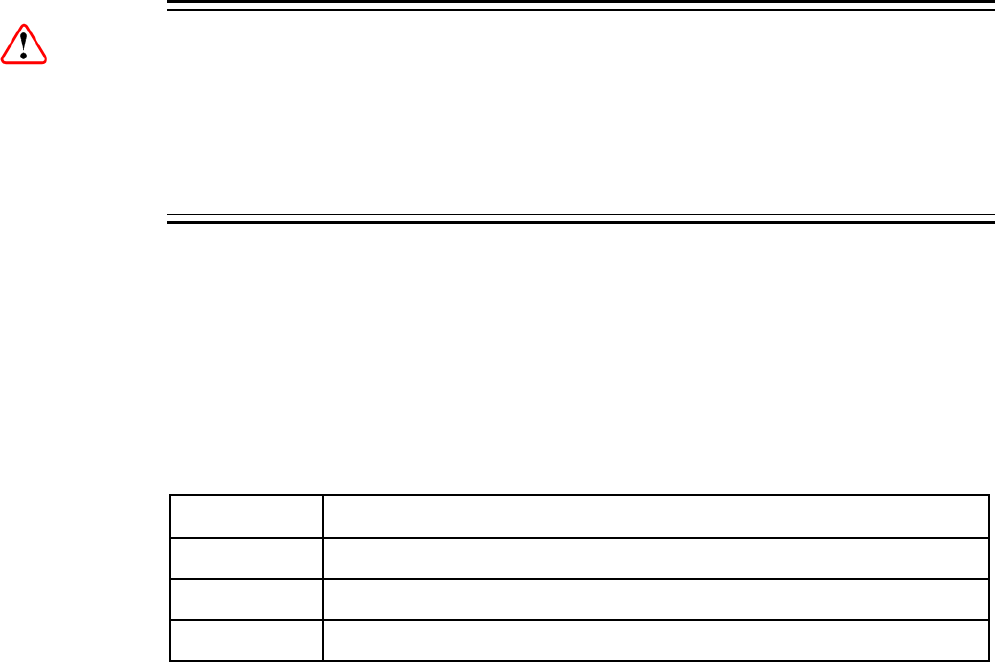
Chapter 7
7.4.3 Preliminary Investigations
Always investigate the failure symptoms fully, prior to taking remedial action. Fault
diagnosis for the equipment operator is limited to the following tasks, since the
operator should NOT remove the covers of the equipment:
1. Ensure all leads and connectors are in place and serviceable.
2. Ensure the unit is powered. If not investigate the power source.
Check the fuse.
3. Ensure the alarm status LED on the front of the unit is not lit. If it is, investigate
the Alarm status.
4. Use the C/N Margin display to ensure that the C/N Margin is greater than 0 dB. If
it is not, check the input to the Receiver. (When utilizing satellite input)
7.4.4 AC Fuse Replacement
Caution...
This product should only be operated from the type of power source indicated on the
marking label. If you are not sure of the type of power supply to your home or
business, consult your appliance dealer or local power company. For products
intended to operate from battery power, or other sources, refer to the operating
instructions.
The power supply used in this equipment is a wide-ranging, ac power supply unit
designed for use in ambient air temperature conditions of 0°C to +50°C for
100- 240 V AC, 50-60 Hz (see Annex B, Technical Specification for details). There
are no links or switches to be altered for operation from different AC supplies.
The RX8000 Receiver is designed for User Accessible Fuse Replacement.
In addition to the fuse in the supply cable plug (if appropriate) there is a fuse held in
an integral fuse carrier at the AC power inlet at the rear of the unit.
Table 7.1 Fuse Information
Item Specification
Fuse Single pole, fitted in live conductor in power input filter at rear of unit.
Fuse type 5 mm x 20 mm anti-surge (T) HBC, IEC/EN 60127-2 Sheet 5
Fuse rating 2 A, 250 V AC
To replace the AC power fuse perform the following:
EN/LZT 790 0005 R1A
7-6


















